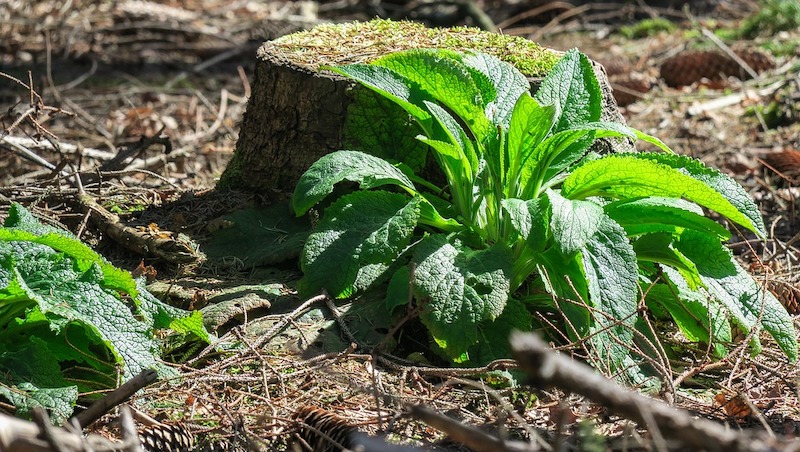Foxgloves are winter hardy over a range of growing zones. With the wide variety of types and cultivars bred for ornamental gardening, gardeners from Minnesota to Florida can grow this short-lived perennial plant.

Protecting Foxgloves in Winter
In the first year, Foxgloves develop a short and compact rosette of leaves along with a strong root system. In warmer gardening zones, generally USDA zones 8-10, the plants will remain green all winter, making them easy to transplant and identify where they are planted. In the colder zones, the foliage will die back completely, emerging in the spring larger and much more robust. Marking the plants with a stake or other kind of marker will ensure they are not damaged or accidentally dug up during spring garden cleanup.
Mulching the plant's crowns over winter will also provide insulation and protection. Add a layer of 3-4 inches of finely shredded arborist chips or leaves. The mulch must be removed from the top of the plant in spring as the new growth emerges. Perennial Foxgloves will overwinter in snowy locations better if their flower stalks are cut back to the ground, leaving the base rosette of leaves intact.
Cutting Back Foxgloves For Winter
Perennial Foxgloves will overwinter in snowy locations better if their flower stalks are cut back to the ground before fall; avoid cutting the basal growth. Deadheading soon after the flowers have died back will also help control self-seeding. Biennial plants do not need to be cut back before winter to allow the plant to self-seed. The dead stalks and stems will help mark the original plant and can be cut back in spring.

Foxglove Winter Care in Pots
Foxglove in containers will need to have excellent drainage through the winter. If the pot is in a location that is subject to periods of standing water, place bricks or pot feet under the container to raise it out of the water. Planters that are small enough to be moved should be relocated out of the path of prevailing winds and storms. Windbreaks constructed from frost-free horticultural fabric and strong posts can provide temporary shelter to large planters.
Watering Foxglove in Winter
Watering Foxglove in the winter is not usually required. Even in growing zones where the leaves are evergreen, extra watering is only needed if there is an extended period of unusual dryness or heat. Plants growing in climates with heavy winter rains need excellent drainage. Root rot diseases are the biggest risk for Foxglove over the winter.
Growing Foxglove Indoors
Foxglove requires a period of chilling, vernalization, over the winter to flower well. Temperatures below 35 degrees Fahrenheit are ideal. Bringing the plant indoors to grow as a houseplant over the winter is not recommended. Growing the seedlings in an unheated greenhouse through the winter is a good way to propagate plants for the following year. This exposes the seedlings to cold temperatures while still providing winter protection.
Steps To Care For Foxglove in Winter
Hardy biennial and perennial Foxgloves generally need little assistance to survive the winter months. Poorly draining soil, not cold temperatures, is the most common reason that Foxglove does not survive.
Step 1 - Ensure good drainage in the garden or container, even in the winter when the plants are dormant.
Step 2 - Move any pots to a more sheltered location if they are in the path of heavy winds and storms.
Step 3 - Cut back the flowering stems of perennial types to control self-seeding. Biennial types can be left to self-seed so that the next generation can germinate.
Step 4 - Foxgloves require a period of cold temperatures to grow well the following year.
 |
Author Robbin Small - Published 6-28-2023 |
